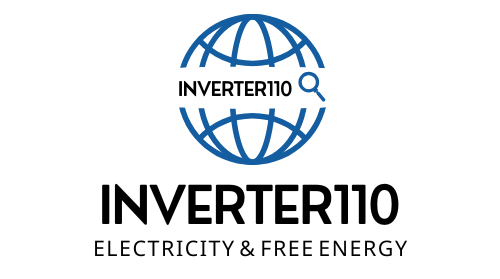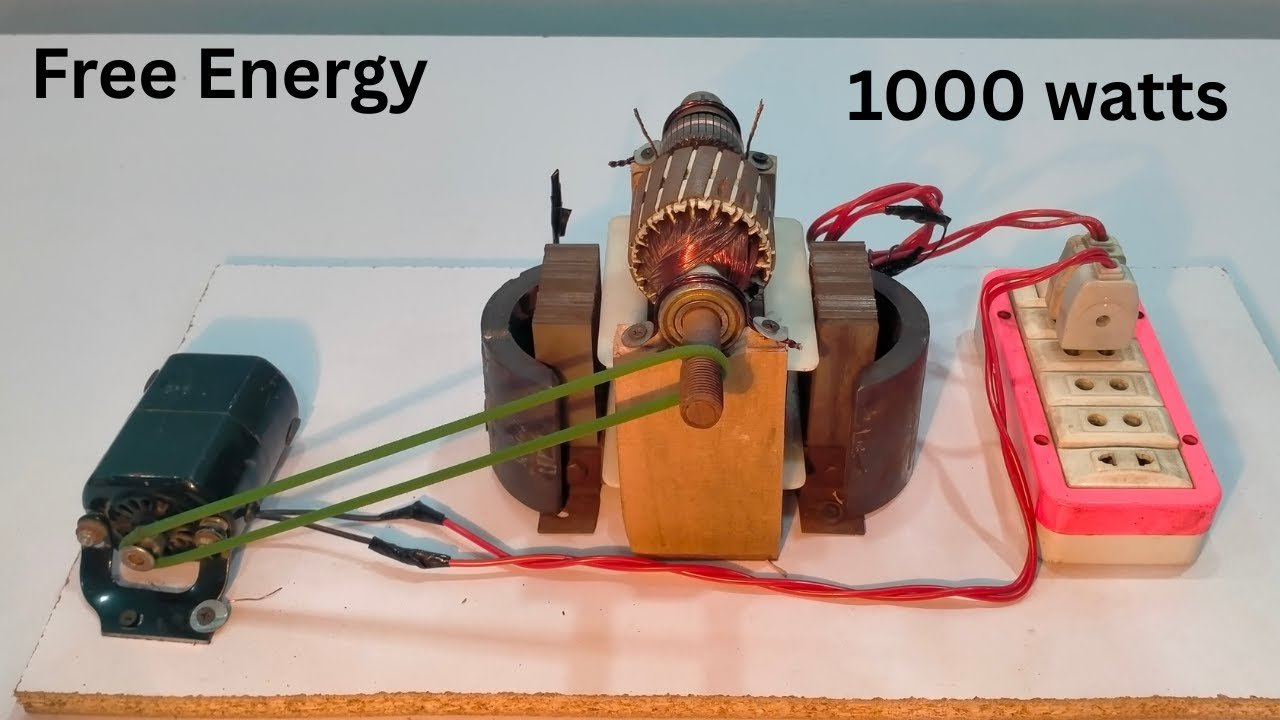How to Make 1000W 220V Endless Magnet rotor free energy at Home | Transformer + Magnet + 1HP Rotor DIY
🔥 Introduction: The Dream of Endless Magnet rotor free energy
For decades, inventors, hobbyists, and backyard engineers have dreamed of building a machine that could run forever — generating electricity without consuming any fuel. You’ve probably seen hundreds of YouTube videos titled “Free Energy Generator 220V 1000W DIY at Home”. These videos spark curiosity because they promise something we all want: free, unlimited electricity.
But is it possible? Can you really make a 1000W 220V generator at home using a transformer, magnets, and a 1HP rotor?
The short answer: not in the way most videos show it. According to physics, energy cannot be created from nothing. However — and this is the exciting part — with the right combination of magnets, coils, transformers, and motors, you can build a powerful DIY generator that converts mechanical energy into usable electricity.
This article will guide you step by step through the theory, design, and DIY approach to making your own magnetic generator, while also separating myth from reality. By the end, you’ll understand how to:
Use a transformer to step up voltage.
Convert a 1HP motor rotor into a generator.
Harness magnets + coils for electricity.
Build something that actually works in real life — not just in theory.
⚡ 1. The Myth and Reality of Free Energy
The idea of “endless free energy” isn’t new. Nikola Tesla himself explored wireless power and magnetic resonance. The internet is filled with diagrams claiming you can spin a rotor once and it will rotate forever, generating continuous electricity.
The myth: A magnet + rotor setup can run indefinitely without fuel.
The reality: Friction, electrical resistance, and energy losses always exist. No system can be truly perpetual. But here’s the good news — with clever engineering, you can still build a highly efficient generator that reduces your dependence on grid power.
So while we can’t break the laws of physics, we can hack them to our advantage.
🔧 2. Core Components Explained
Before we dive into the DIY build, let’s understand the three main parts of the 1000W “free energy” generator concept.
🌀 The Transformer
A transformer is a device that changes voltage levels. If your generator produces low voltage AC (say 24V or 48V), a transformer can step it up to 220V, making it suitable for home appliances.
🧲 Magnets + Coils
Electricity is generated when a magnetic field moves past a coil of wire. Strong neodymium magnets combined with copper coils can produce a steady current, depending on how fast the rotor spins.
⚙️ 1HP Rotor (Motor as Generator)
A 1 Horsepower (HP) motor can be repurposed as a generator. By attaching magnets to the rotor and spinning it mechanically (with wind, water, or even a hand crank), you induce voltage in the stator windings.
🛠️ 3. The DIY 1000W 220V Generator Setup
Now let’s walk through the conceptual build of your homemade generator.
Step 1: Prepare the Rotor
Take a 1HP induction motor (commonly available in workshops).
Remove the casing and access the rotor.
Attach neodymium magnets evenly around the rotor to create alternating north-south poles.
Step 2: Add the Coils
Use enameled copper wire (16 to 20 gauge) to wind coils around the stator slots.
Each coil should have enough turns to produce decent voltage when exposed to magnetic flux.
Connect the coils in series or parallel depending on your output requirement.
Step 3: Connect to Transformer
The raw output from the coils may be around 24–48V AC.
Use a step-up transformer to raise this to 220V.
Add a rectifier and capacitor bank if you need DC output.
Step 4: The Drive Mechanism
Here’s the critical part: the rotor must spin. You can use:
A manual crank (not practical for 1000W).
A wind turbine blade connected to the shaft.
A water wheel if you have a stream.
Even a small gasoline engine (though this defeats the “endless” concept).
⚠️ 4. Safety First: Working With 220V
220V electricity is dangerous. When experimenting:
Always use insulated gloves.
Test with low voltages before stepping up.
Keep a fuse or circuit breaker in line.
Never touch exposed wires while the system is running.
🔬 5. The Reality Check: Can It Run Forever?
Here’s where science steps in:
Your generator can work — but it will not spin forever by itself. You need an external energy source (wind, water, or manual effort).
The magnet + transformer + rotor setup works as an energy converter, not an infinite energy source.
This is why many “free energy” videos online look suspicious: the creators often hide a battery or external motor that keeps the rotor spinning.
🌍 6. Real Alternatives to “Free Energy”
Instead of chasing impossible perpetual motion, you can use this setup in combination with renewable sources:
Wind Generator: Attach blades to your rotor shaft. With steady wind, your motor-turned-generator can easily output 220V through a transformer.
Micro Hydro: If you live near flowing water, connect the rotor to a water wheel. Continuous rotation = continuous power.
Solar + Storage: Pair your generator with solar panels and batteries to reduce grid dependence.
Bicycle Generator: A 1HP motor connected to pedals can charge batteries at home.
These are real, working solutions that can produce electricity for years.
📊 7. How Much Power Can You Actually Generate?
Let’s do some quick math.
1HP = 746 Watts.
If your rotor spins efficiently, you could generate 600–700W continuous.
With a transformer, this can be stepped up to 220V output.
With strong magnets and optimized coils, some hobbyists report close to 1000W peak output.
So yes — you can reach 1000W, but not without an external drive source.
📚 8. Case Studies From DIY Enthusiasts
Experimenter A: Converted a washing machine motor into a generator, producing ~400W at 24V, later stepped up to 220V.
Experimenter B: Built a magnetic rotor generator, reaching ~1kW when driven by a small wind turbine.
Experimenter C: Used a bicycle-driven setup to charge a 12V battery bank, later converted to 220V AC with an inverter.
🔮 9. The Future of Free Energy
While true perpetual motion is impossible, technology is moving closer to ultra-efficient energy harvesting. Research in:
Magnetic levitation (reducing friction).
Superconducting coils (eliminating resistance).
Advanced wind and tidal turbines.
One day, what we call “free energy” may become a reality through renewables + storage.
✅ 10. Conclusion
So, can you build a 1000W 220V free energy generator at home with a transformer, magnets, and a 1HP rotor?
Yes — you can build a working DIY generator.
No — it won’t run forever on its own.
But that doesn’t mean the journey is wasted. By experimenting with magnets, coils, and rotors, you’re learning the fundamentals of electricity. You can power small appliances, charge batteries, and even reduce your electricity bill.
The key takeaway: Don’t chase perpetual motion — chase smart DIY renewable energy. With creativity and persistence, your garage experiments can evolve into a practical power solution.
DIY 1000W 220V Free Energy Generator
| Question | Answer |
|---|---|
| 1. What is a 1000W 220V free energy generator? | It’s a DIY concept where a motor, magnets, and transformer are combined to produce up to 1000W of usable electricity. |
| 2. Can I really make endless free energy at home? | No, endless free energy is not possible; you need an external source like wind, water, or manual effort to spin the rotor. |
| 3. What role does the transformer play? | A transformer steps up the low voltage generated by coils to 220V for household use. |
| 4. Why use a 1HP rotor? | A 1HP motor can be repurposed as a generator rotor because it’s powerful enough to generate 600–1000W with proper setup. |
| 5. Do I need neodymium magnets? | Yes, strong magnets like neodymium are preferred for higher efficiency and stronger induction. |
| 6. How much copper wire is required? | Typically 1–2 kg of enameled copper wire (16–20 gauge), depending on the coil design. |
| 7. Can this generator power household appliances? | Small devices, lights, or fans can be powered, but high-power appliances like refrigerators are not recommended. |
| 8. Is it dangerous to work with 220V? | Yes, 220V can be lethal. Always use proper insulation, gloves, and fuses when experimenting. |
| 9. How do I keep the rotor spinning? | You need a drive source like wind blades, water wheel, or manual/bike crank. |
| 10. Can I store the generated electricity? | Yes, connect the output to a battery bank using a rectifier and capacitor. |
| 11. Is this the same as perpetual motion? | No, perpetual motion is impossible; this setup converts external mechanical energy into electricity. |
| 12. How much does it cost to build? | Around $100–$300, depending on materials (motor, magnets, copper wire, transformer). |
| 13. How many volts can a single coil produce? | Depending on winding and speed, a coil can generate 6–24V AC before stepping up. |
| 14. Can I use a car alternator instead? | Yes, a car alternator works well and already has built-in coils and rectifiers. |
| 15. What is the lifespan of this generator? | With proper care, it can last several years, but magnets may weaken over decades. |
| 16. Can it really produce 1000W? | Yes, under ideal conditions with a strong drive source, 600–1000W is possible. |
| 17. Can I run this generator indoors? | No, it should be kept in a ventilated area, especially if using wind or water attachments. |
| 18. What is the efficiency of such a generator? | Typically 50–70%, depending on design, load, and drive source. |
| 19. Can this reduce my electricity bill? | Yes, if combined with renewable sources like wind or water, it can supplement your home power. |
| 20. What’s the best alternative to free energy machines? | Solar panels, wind turbines, and hydro systems are practical and proven renewable energy solutions. |

